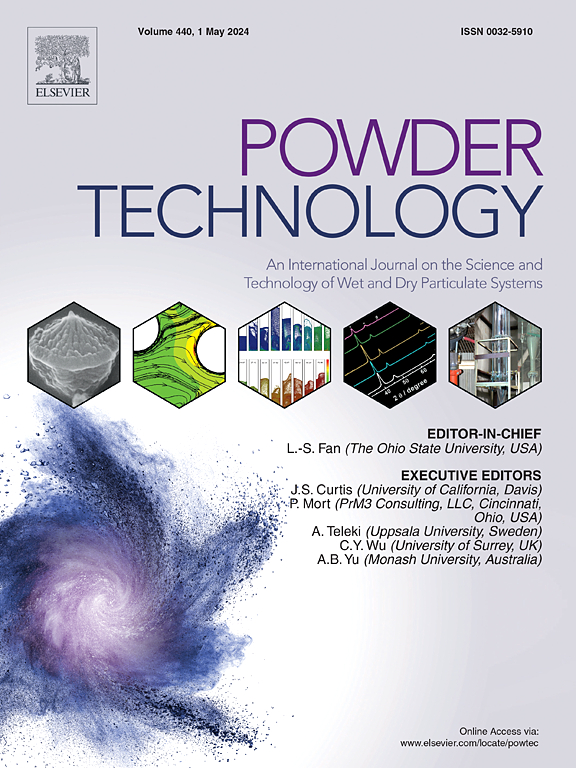爆炸驱动下环氧丙烷液滴/铝粉的分散及二次爆炸模型:考虑初始流场
IF 4.5
2区 工程技术
Q2 ENGINEERING, CHEMICAL
引用次数: 0
摘要
多相颗粒在爆炸驱动下的分散和爆炸特性对化工领域的安全设计和事故预防具有重要意义。为解决现有数值模型存在的流场条件不连续、不完备和近场误差大的问题,建立了爆炸驱动下环氧丙烷液滴/铝粉的分散二次爆炸模型。该模型对初始弥散、云发展、浓度分布和二次爆炸四个阶段进行连续计算。该模型考虑了初始流场条件,有效地将近场计算误差降低到10%以内。通过实验和数值模型研究了混合燃料在静态、有风速和有下降速度三种工况下的扩散和爆炸过程。结果表明:在初始风速下,下风区弥散半径扩大了16.8%;燃尽率提高15.0%,二次爆炸峰值超压提高4.2%。在初始降速效应下,燃料云的浓度分布更加均匀。气相的比例增加。验证了初始流场的速度变化可以影响液滴的剥离和蒸发效果,从而增强云的爆炸性能。本文章由计算机程序翻译,如有差异,请以英文原文为准。

Dispersion and secondary explosion model of propylene oxide droplets/aluminum powder under explosion driving: Considering the initial flow field
The dispersion and explosion characteristics of multiphase particles under explosion-driving hold significant importance for safety design and accident prevention in the chemical industry field. In order to solve the problems of discontinuity, incompleteness of flow field conditions and significant near-field errors in the existing numerical models, a dispersion and secondary explosion model of propylene oxide droplets/ aluminum powder under explosion driving is built. The model performs continuous computations for the four stages of initial dispersion, cloud development, concentration distribution, and secondary explosion. The model considers the initial flow field conditions, effectively reducing the near-field computational error to within 10 %. The dispersion and explosion processes of mixed fuel under three conditions (static, with wind speed and with falling speed) are studied through experiments and numerical models. The results show that under the initial wind speed, the dispersion radius of the downwind area extends by 16.8 %. The burnout rate increases by 15.0 %, and the peak overpressure of the secondary explosion rises by 4.2 %. Under the initial falling speed effect, the concentration distribution of the fuel cloud becomes more uniform. The proportion of the gas phase increases. It has been verified that the velocity change of the initial flow field can influence the stripping and evaporation effects of droplets, thereby strengthening the explosive properties of the cloud.
求助全文
通过发布文献求助,成功后即可免费获取论文全文。
去求助
来源期刊

Powder Technology
工程技术-工程:化工
CiteScore
9.90
自引率
15.40%
发文量
1047
审稿时长
46 days
期刊介绍:
Powder Technology is an International Journal on the Science and Technology of Wet and Dry Particulate Systems. Powder Technology publishes papers on all aspects of the formation of particles and their characterisation and on the study of systems containing particulate solids. No limitation is imposed on the size of the particles, which may range from nanometre scale, as in pigments or aerosols, to that of mined or quarried materials. The following list of topics is not intended to be comprehensive, but rather to indicate typical subjects which fall within the scope of the journal's interests:
Formation and synthesis of particles by precipitation and other methods.
Modification of particles by agglomeration, coating, comminution and attrition.
Characterisation of the size, shape, surface area, pore structure and strength of particles and agglomerates (including the origins and effects of inter particle forces).
Packing, failure, flow and permeability of assemblies of particles.
Particle-particle interactions and suspension rheology.
Handling and processing operations such as slurry flow, fluidization, pneumatic conveying.
Interactions between particles and their environment, including delivery of particulate products to the body.
Applications of particle technology in production of pharmaceuticals, chemicals, foods, pigments, structural, and functional materials and in environmental and energy related matters.
For materials-oriented contributions we are looking for articles revealing the effect of particle/powder characteristics (size, morphology and composition, in that order) on material performance or functionality and, ideally, comparison to any industrial standard.
 求助内容:
求助内容: 应助结果提醒方式:
应助结果提醒方式:


